All dogs shed at least a little bit, but some shed waaaaaaaay less than others.
Heavy shedders can not only coat your house in hair, but this isn’t just an eyesore: Shed hair can carry dander and saliva around, which can cause allergic reactions in intolerant people.
For these reasons, many people set their sites on low-shedding dog breeds.
Whether you just can’t stand the sight of dog hair or have dog allergies, there are quite a few dog breeds you can pick from. While no dog is truly “hypoallergenic,” many of these breeds are more suitable for those with allergies than heavy shedders.
Benefits of a Low-Shedding Dog
There are a few overall benefits of owning a low-shedding dog. Here are some of the most significant upsides:
- Less dander and saliva. Hair tends to spread dander and saliva around, which can cause allergic reactions in those who are sensitive. Low-shedding dogs spread this stuff around less, making them a better choice for humans with allergies.
- Less hair on your furniture. Dogs can leave a lot of hair lying around your house. Even a moderately sized dog can easily cover your whole couch during a nap. Not to mention all of the dog hair that can get stuck to your clothes! Dogs who shed minimally won’t leave hair lying around nearly as bad.
- Less coat maintenance. Because many low-shedding dogs have less hair than their heavy-shedding counterparts, you’ll often be able to get away with less coat maintenance. However, this isn’t always the case – several of the dogs on our list that shed minimally (such as Poodles) still need specialized grooming due to their elaborate or unusual coats. That same quality that makes them low shedders might also mean more trips to the groomer!
Dogs That Don’t Shed (Or Shed Minimally)
Here are a few of the most popular, low-shedding dog breeds around.
1. Afghan
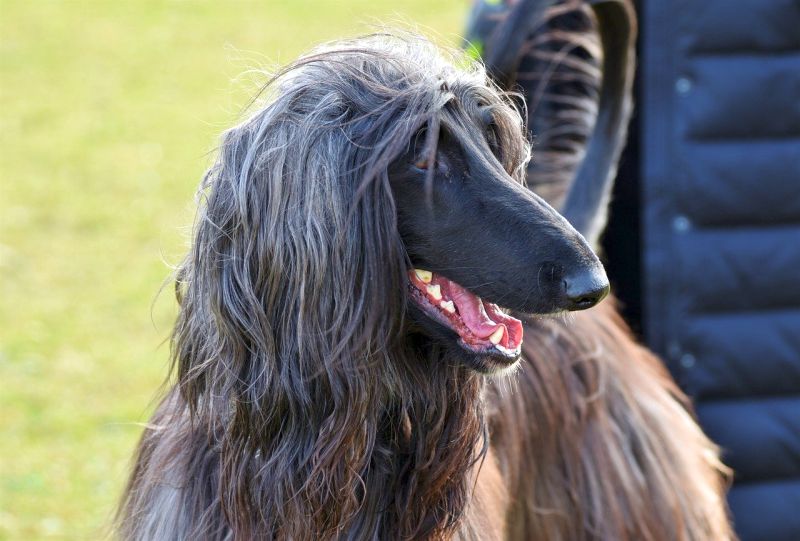
These aristocratic dogs are best known for their unique fur and overall appearance. They have long, flowing hair that mostly hangs from their ears, belly, and legs.
They shed very minimally and therefore need to be regularly brushed to avoid mats and tangles. Owners may need to consider purchasing specialized grooming tools.
Afghans are an ancient, intelligent, and independent breed, which can make training difficult when compared to some other dogs. We generally do not recommend this dog for new owners for this reason.
However, Afghans are also extremely loyal and devoted. They can be quite lively and need an area to run. They do best with fenced-in yards and active families.
These dogs are quite tall and heavy, as they can stand up to 27 inches tall and can weigh up to 60 pounds. They enjoy pretty long lives for a larger dog – many reach 15 years of age or so.
2. American Hairless Terrier
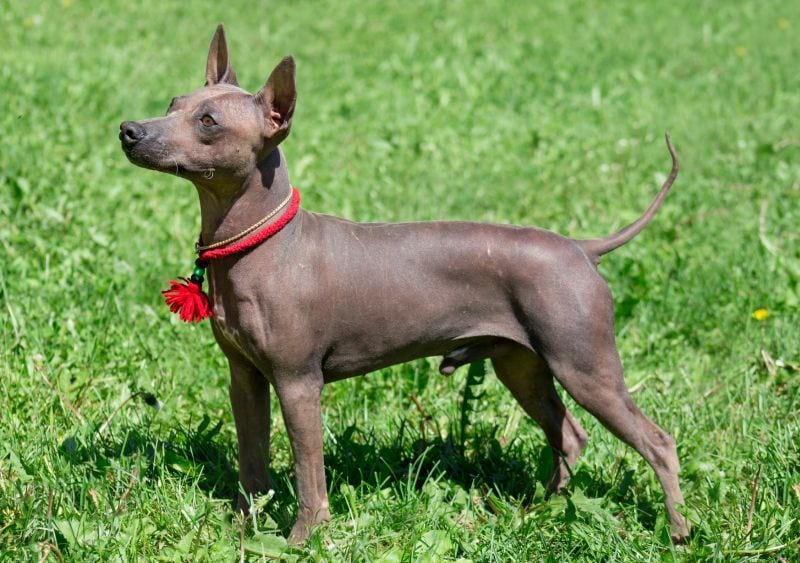
As the name suggests, this dog is hairless for the most part. You can adopt coated versions of the breed, but the hairless variety of this canine is best known.
This breed is a true terrier, standing between 12 to 16 inches at the shoulder. He does not weigh more than 12 to 16 pounds at the most.
Like most terriers, this dog is extremely energetic and playful. Despite this, though, he only has moderate exercise needs. A single brief, daily exercise session is plenty.
Because this dog is hairless, there are a few concerns you need to keep in mind before adopting one. Sunburn is a common concern with this dog, and this is one of the times where a full covering dog coat or even dog sunscreen is highly recommended.
You’ll need to baby your fur baby a little bit more than usual because he doesn’t have a coat to protect him.
3. Basenji
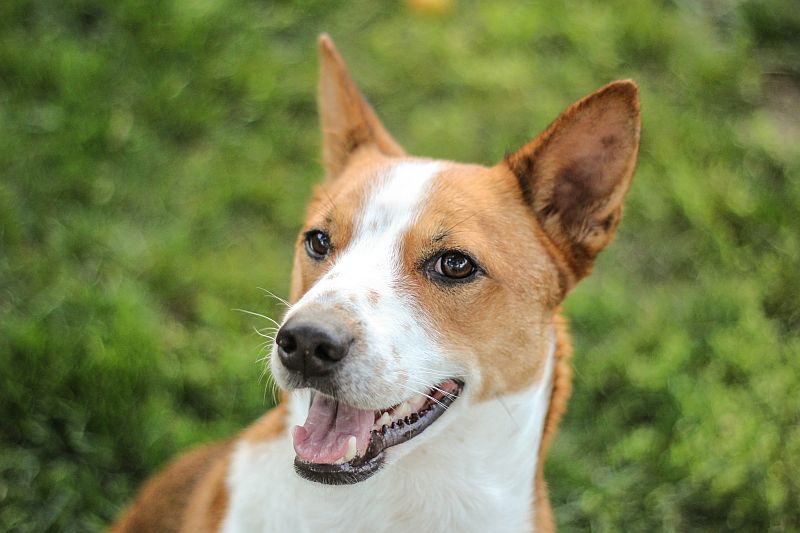
The Basenji is a unique all-around dog, but he isn’t very common in the United States. In fact, he is ranked 87th in popularity across the country.
This canine is pretty small, standing only 16 to 17 inches at the shoulder. He weighs around 22 to 24 pounds, with males being slightly larger than females on average.
He has a very short coat and a tightly coiled tail. Typically, this dog is described as having more enormous eyes than your average canine, which many people find incredibly adorable.
The word “basenji” means “barkless dogs,” and this canine lives up to that description. He does not bark, but he does makes a variety of vocalizations, including a sound that is somewhat like a yodel. He is not incredibly quiet, despite what you would expect from his name.
The basenji also tends to groom himself like a cat, which is another feature that makes him truly unique.
4. Bedlington Terrier
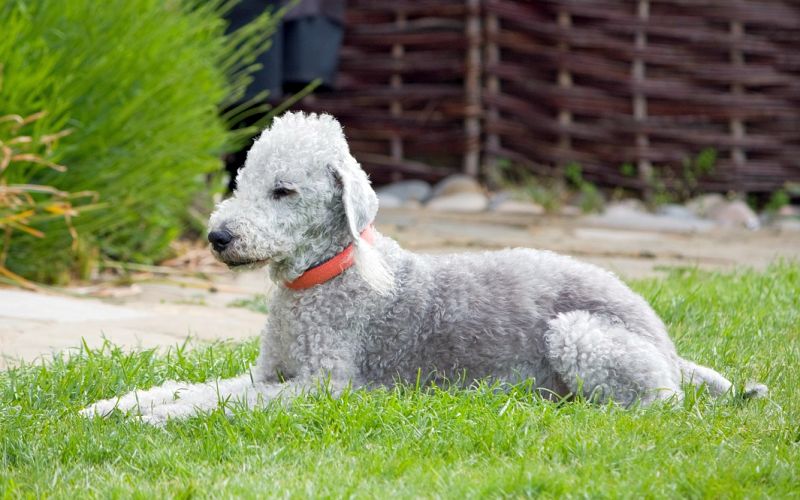
The Bedlington terrier has a relatively unusual coat. He is elegant, but sturdy with a white, curly coat and tasseled ears. His pear-shaped head is one of his most recognizable and prominent features.
The origin of the Bedlington terrier is not completely understood. You can tell at a short glance that there is some sort of sighthound in his family tree, likely a whippet. However, the details of his full lineage have been lost.
This canine is very easy to take care of.
He is charming and full of fun but does not have a significantly high need for exercise. He loves to be the center of attention and is often very well-mannered inside, where he prefers to spend most of his time. He is quite loyal, which can translate to protectiveness, but he is not particularly aggressive.
The Bedlington terrier does not shed much at all. However, his coat will grow fast and needs to be clipped every two months.
Luckily, grooming this dog is very easy, and many owners choose to do it themselves with their own dog grooming clippers. He will also need to be brushed a few times a week to prevent mats and tangles.
5. Bichon Frise
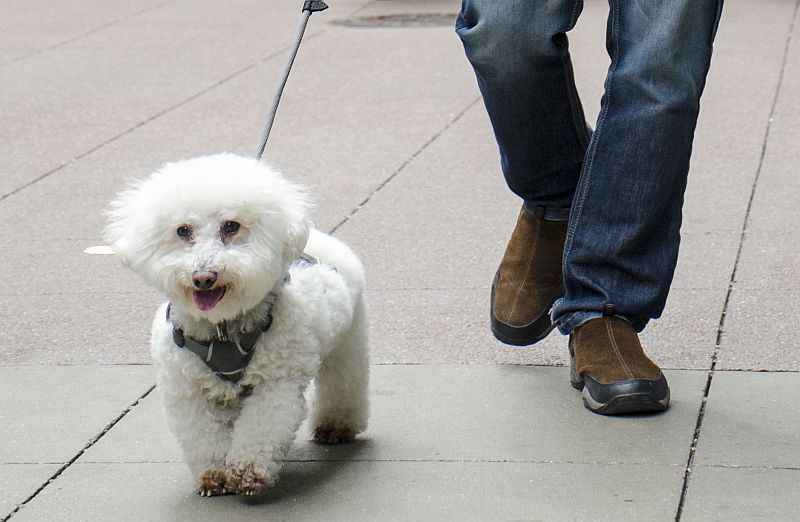
The bichon frise is a small dog, standing anywhere between 9.5 and 11.5 inches at the shoulder.
He usually weighs between 12 to 18 pounds, which puts him squarely in the small range. Despite how he looks, he is not considered a toy dog; he is in the non-sporting group.
The bichon frise is widely known for his “hypoallergenic” coat. He does not shed much at all and needs to be trimmed regularly because of this.
His coat is extraordinarily plush and velvety, which is one reason why the bichon frise is so popular.
Bred in ancient times to be a companion dog, this breed is often suitable for nearly any family situation. He is typically good with children and other pets after proper socialization.
His prey drive is not particularly strong either, so he is even good with other pets in most cases.
This breed operates under the assumption that everyone is a friend, so he is not particularly protective. This loyal dog also learns quickly and enjoys pleasing his owners (and everyone else).
Check out some of the best bichon frise dog foods!
6. Chinese Crested
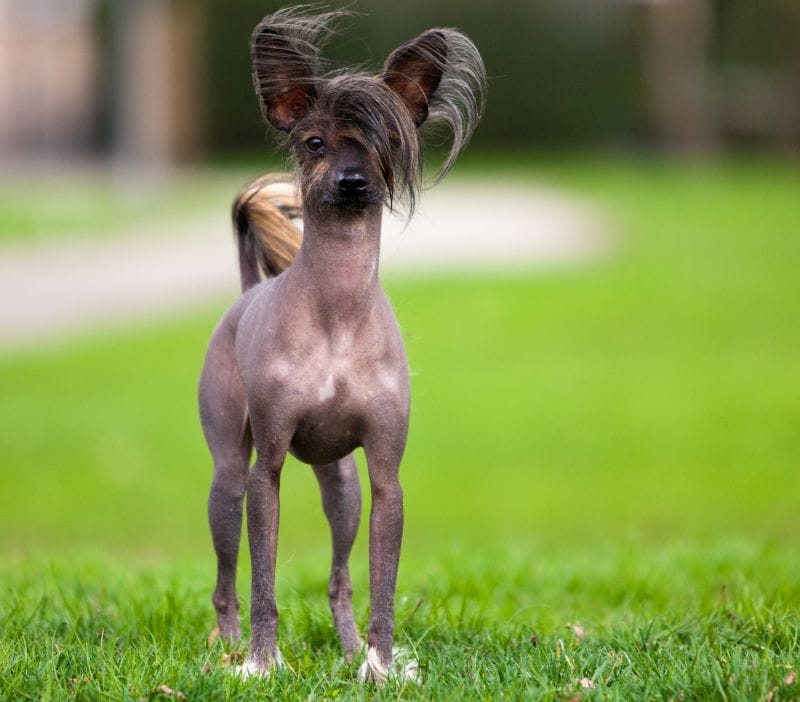
The Chinese crested is a very unique-looking dog. He is mostly hairless, though there are a few patches of hair on his head and the bottom of his legs. He is considered a toy breed and stands between 11 and 13 inches high.
There is also a coated variety of this breed, which is completely covered in soft, silky hair. But besides the differences in hair, there is little difference between these two variations.
This dog acts like a mix between your average toy dog and a terrier. He is a bit more energetic than other toy dogs and enjoys playtime. Because of this, though, he does need regular exercise.
Daily short walks are necessary, or short walks in the backyard. His energetic nature means that he can also be competitive in canine sports.
The Chinese crested is extremely friendly and relatively easy to train. He can make an excellent first-time dog for those who can meet his exercise needs.
Check out some of the best dog foods for Chinese cresteds!
7. Coton de Tulear
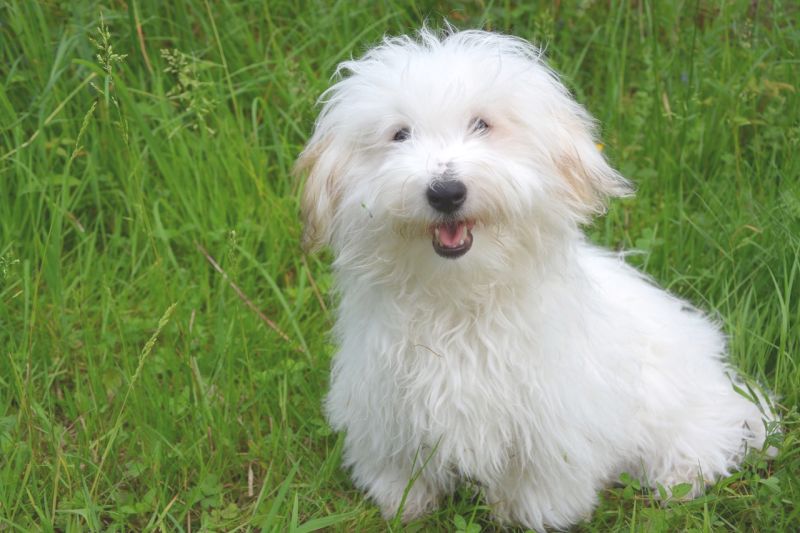
This dog breed is another fluffy, toy dog that gets along well with both people and other pets while shedding only minimally.
The coton de Tulear is well-known for lounging around the house all day with his family and following his favorite people around the house.
This is a tiny dog. He usually only stands between 9 and 11 inches high and weighs only 8 to 13 pounds at most. His coat is extremely fluffy and soft, making him a great cuddle buddy.
He also has a few unique traits that have given him a bit of a cult following. This dog is well-known for his clownish nature and is extremely lighthearted.
He has quite a few unusual vocalizations, including a rather strange bark and tendency to “talk.” He can also walk on his back legs better than most dogs.
8. Irish Water Spaniel
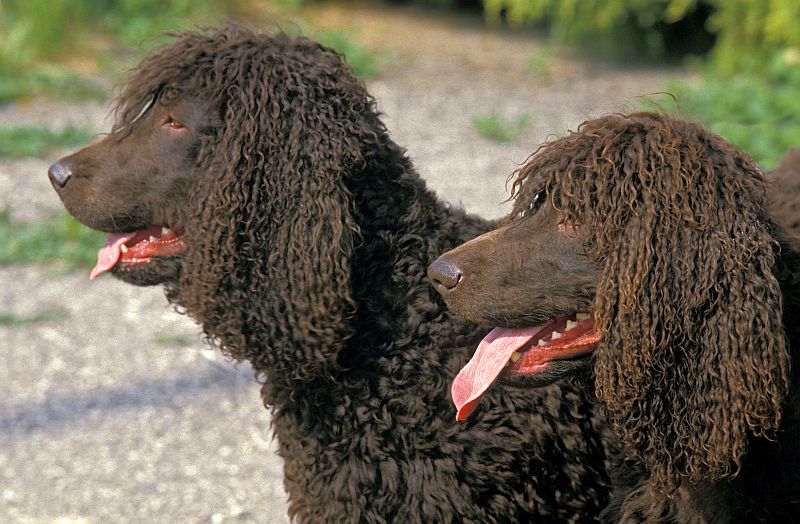
The Irish water spaniel straddles the line somewhere between “medium” and “large.”
Typically, this dog stands somewhere between 21 to 24 inches at the shoulder and weighs between 55 and 65 pounds (we’d usually consider that “large,” but YMMV).
As you might guess, this dog was bred as a water retriever. Because of this, he is still very active and turbulent today. He needs quite a bit of regular exercise, making him the best choice for an active family. Multiple daily walks are necessary, as is a large, fenced-in yard.
This canine is very easy to train and reliable. He will do his best to do whatever you tell him to do. He isn’t the most intelligent dog in the world, but he is smart enough to learn commands.
But while he loves his family, he is not particularly friendly. He tends to be aloof with strangers and prefers the company of his family. However, with proper socialization, he will learn to behave like a gentleman.
9. Kerry Blue Terrier
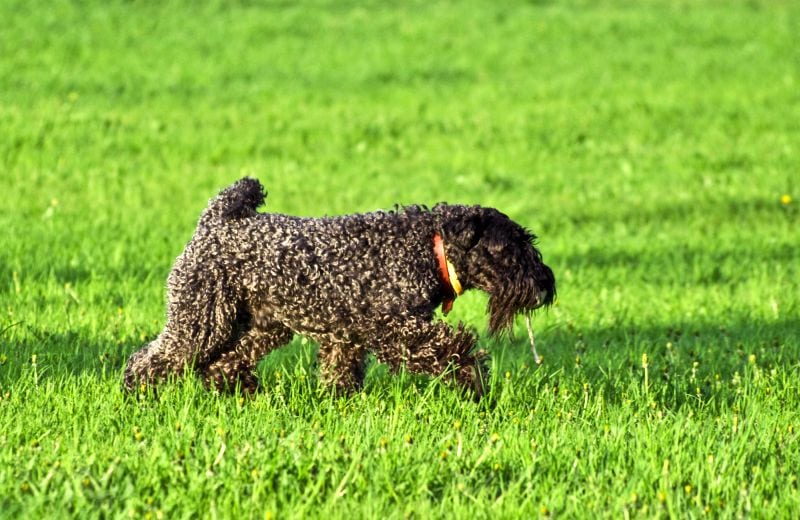
The Kerry blue terrier is easily recognizable due to his broad nose and tasseled muzzle. He usually stands around 18 inches tall, with males being slightly bigger than females. Typically, the difference in genders is not noticeable unless they’re standing side-by-side.
Like a faithful terrier, this dog is energetic and loves people.
He needs regular exercise through either play or long walks. A fenced-in yard is a good idea for this canine, though you cannot leave him outside in the yard for long periods of time and expect him to behave.
This dog wants to be with his owner first and foremost and will not be happy in a yard by himself all day (though we doubt any dog is).
This breed is alert and responsive, but not particularly outgoing. He likes people, but not as much as some other dogs.
Training is quite a bit harder for the Kerry blue terrier than other breeds. He is very independent and smart, which can cause him to ignore your commands if he thinks he knows better.
10. Maltese
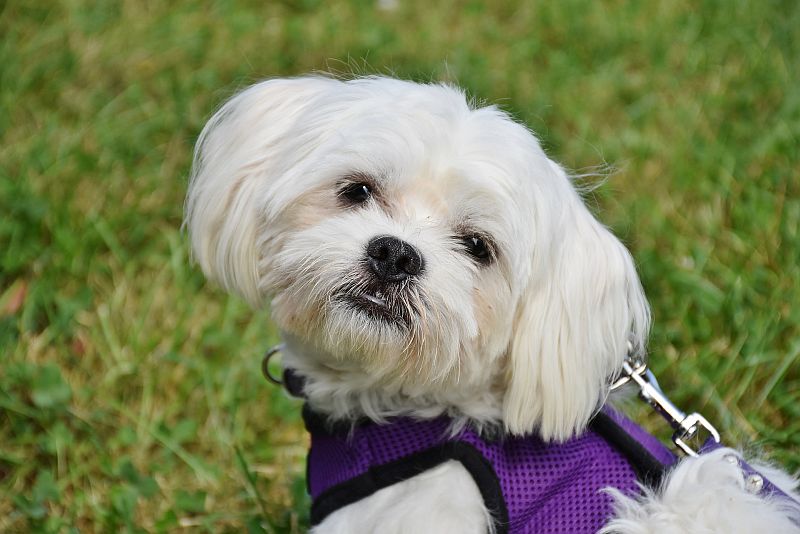
The Maltese is affectionate, exceptionally tiny, and usually weighing less than seven pounds. He is covered by a long, silky coat, making him almost instantly recognizable.
This canine does not shed much at all, but he does shed a bit more than others on this list – mostly because he just has so much hair. He does need daily brushing with a proper dog brush to prevent mats and keep his fur flowing.
Regular baths are also necessary, especially if you keep your dog’s hair long.
Despite his small size, this dog is exceptionally hardy. He can be an alert watchdog when he needs to be, which can make him a bit yappy at times as well.
He is fearless but assumes nearly everyone is a friend he just hasn’t met yet. And this breed’s friendly nature is not limited to people — he seems to get along with creatures large and small, including other pets.
This canine does not need substantial amounts of exercise. However, he can hold his own on the agility course. He is perhaps one of the smartest toy dogs and takes very well to training.
11. Peruvian Inca Orchid
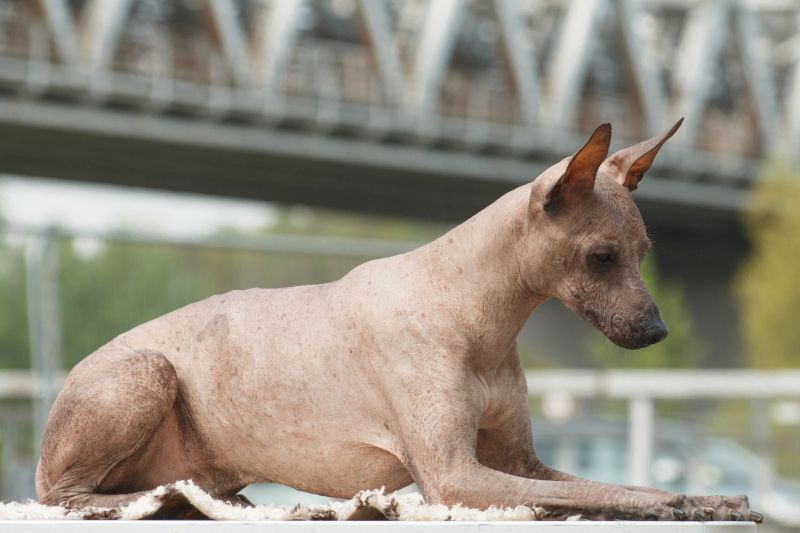
This sighthound hails from Brazil, and comes in coated and hairless forms. The hairless varieties are going to be the most hypoallergenic and are what we suggest for those who have allergies or want to keep shedding to a minimum. The hairless variation is more common than the furrier form.
This canine comes in a broad range of sizes, which are all recognized by the American Kennel Club. The smallest Peruvian Inca Orchid stands just below 10 inches, while the tallest can get up to 26 inches.
This dog was bred to chase smaller animals, and he still carries much of that instinct today. He may not do well in homes with small pets who may be mistaken as prey.
He is affectionate with most people, but is not particularly fond of strangers and tends to be aloof around people he’s yet to meet. This — combined with his alert nature — also makes him a good watchdog.
Despite having relatively little hair and meeting our criteria as a “low-shedding breed,” these dogs do shed more than some others on this list.
12. Poodles
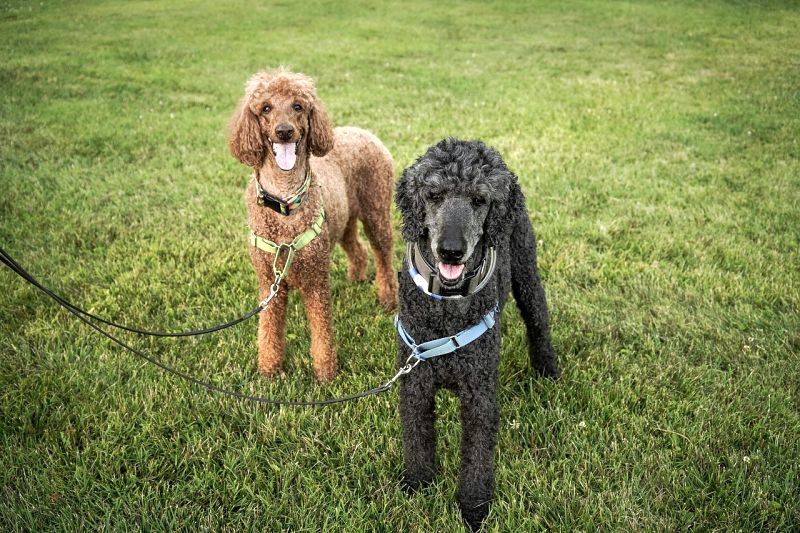
There are a few different kinds of poodles. They’re all relatively similar but vary in size.
- The standard poodle is the biggest and weighs anywhere from 40 to 70 pounds. The males are quite a bit larger than the females.
- The toy poodle is the smallest, weighing only 4 to 6 pounds. These dogs are tiny when compared to their larger cousins.
- Miniature poodles are somewhere in-between these two extremes and weigh between 10 and 15 pounds.
The poodle is most well-known for its extravagant hair cuts. However, most owners prefer to get a simple sports clip, where the poodle’s fur is cut to about the same length all around their body.
Poodles don’t shed very much, but they need professional grooming regularly to keep their fur the proper length, and they must all be brushed daily.
These dogs are quite active, even those of the toy variety. A pleasant, long walk each day should be enough exercise for some, though standard poodles might need a little bit more.
One reason these dogs are so beloved is that they’re easy to train and eager to please. Many poodles love training and following commands. They are also very friendly – no matter their size.
The standard poodle may be used as a guard dog on some occasions. He can be somewhat loud when strangers pass by, and he’s large enough to be intimidating, despite his fluffy appearance.
13. Portuguese Water Dog
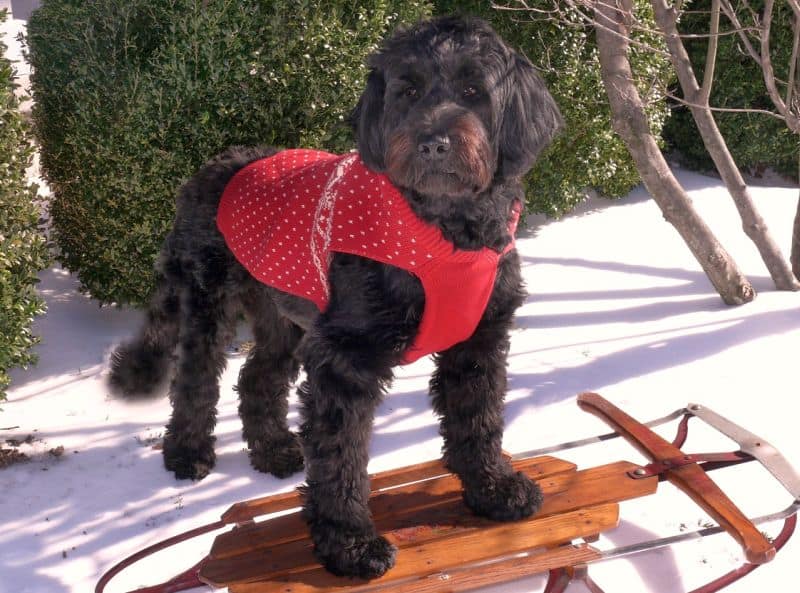
The Portuguese water dog is an exceptionally active breed. He was originally created to herd fish into nets, retrieve lost tackle, and act as a messenger between boats.
He was bred to work all day long and retains this trait in modern times. Because of this, he needs serious amounts of exercise. He is best suited for an active family with a fenced-in yard and plenty of time.
He sheds very, very little, and his coat is waterproof. However, his coat does require regular and involved grooming. He needs to be professionally clipped, and you’ll need to brush him daily to help his coat stay clean.
This dog was bred to work with people, so he is pretty easy to train.
However, sometimes, he can be stubborn and challenge his owner’s will, as he’s a pretty independent pooch. However, it is not so bad that we wouldn’t recommend this dog to new owners.
The Portie is also pretty excitable. In this way, he is almost like a terrier.
Because of this, he may do best in a home without small children since he may get excited and knock them down. Teaching him not to jump is essential.
14. Puli
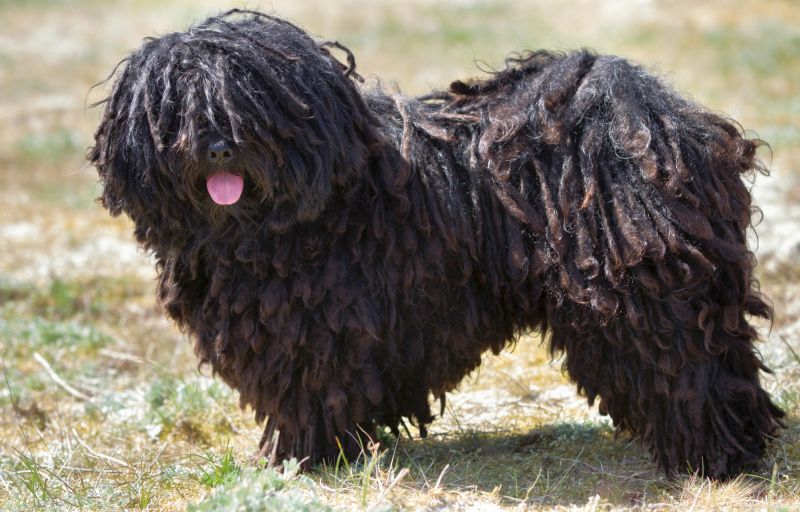
The puli is a rare breed. He is ranked 160th in popularity, according to the American Kennel Club, which can make him somewhat hard to find.
While the puli has a number of interesting features (such as rear leg dewclaws), his most instantanly recognizable feature of the puli is his cords, which are wooly and dense on top, as well as waterproof. When left to its own devices, his coat will cord, but you can brush these cords out if you work at it.
This dog stands about 16 to 17 inches tall and weighs about 25 to 35 pounds. He fits snuggly into the “medium” category.
The puli is a unique dog to groom. His thick undercoat doesn’t come in until he is 8 to 10 months old. Until then, he doesn’t need any grooming.
If left corded, he just needs an occasional bath and separation of the more prominent cords into smaller ones.
15. Schnauzers
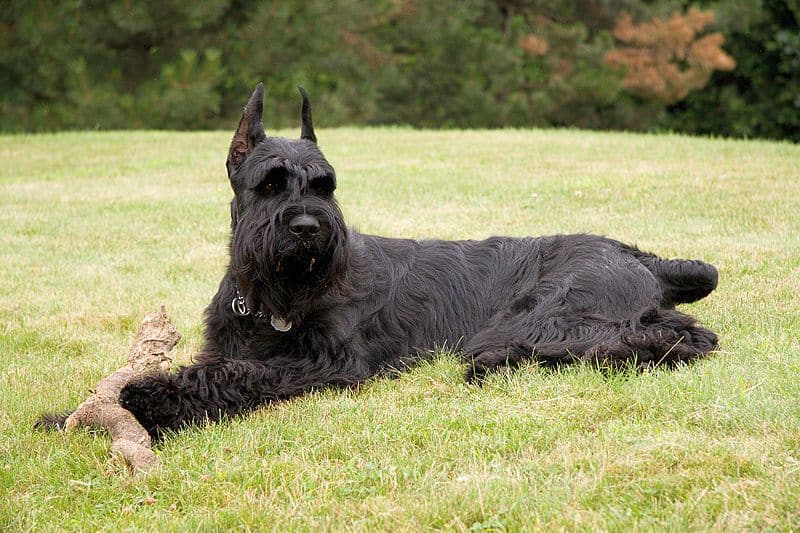
Schnauzers come in three different sizes: giant, standard, and miniature. However, they all have the same personality and traits.
- The miniature schnauzer stands between 12 and 14 inches tall and weighs anywhere from 11 to 20 pounds.
- The standard schnauzer weighs 30 to 50 pounds and stands anywhere from 17.5 inches to 19.5 inches tall.
- Finally, the giant schnauzer is, well, giant. He stands at about 23.5 inches to 27.5 inches and weighs 55 to 85 pounds.
In all three cases, the males are significantly larger than the females.
All schnauzers have dense, wiry coats that are weather-resistant. They do not shed very much but require quite a bit of grooming. They must be brushed every day and clipped often. Many owners do this themselves, but you can also take them to a groomer you trust.
This canine needs quite a bit of activity as well. He needs companionship from humans he can play with and enjoys games like fetch and hide-and-seek.
Training a schnauzer is easy, no matter the size. They are intelligent and listen to their owners willingly. They aren’t the friendliest canines around, but they aren’t aggressive either. His intelligence allows him to recognize the difference between friends and foes easily.
Check out some of the best dog foods for mini schnauzers!
16. Spanish Water Dog
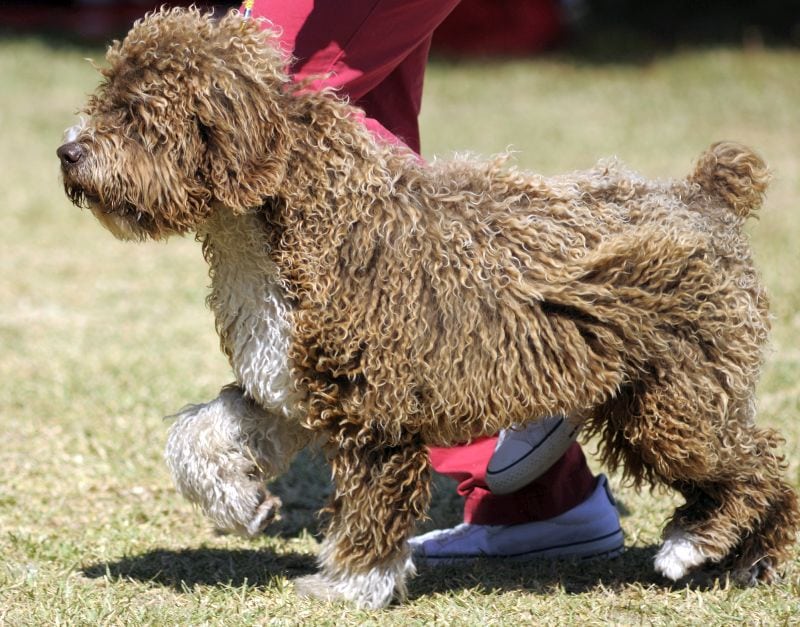
This is another dog with natural cords. The Spanish water dog’s coat is wooly and curly at first, but it begins cording with age.
We’d consider this sturdy dog to be in the “medium” category. He weighs 31 to 49 pounds and stands at 17.75 inches to 19.75 inches. But, the males are significantly larger than the females.
This dog needs specialty grooming due to his coat. You never need to brush him, as brushing can mess with the natural length of his coat. But, regular clipping is necessary.
The cording process requires constant supervision, and the cords will need to be separated regularly. It requires a bit of specialized knowledge to do this properly, so any new owner must be willing to learn.
17. Xoloitzcuintli
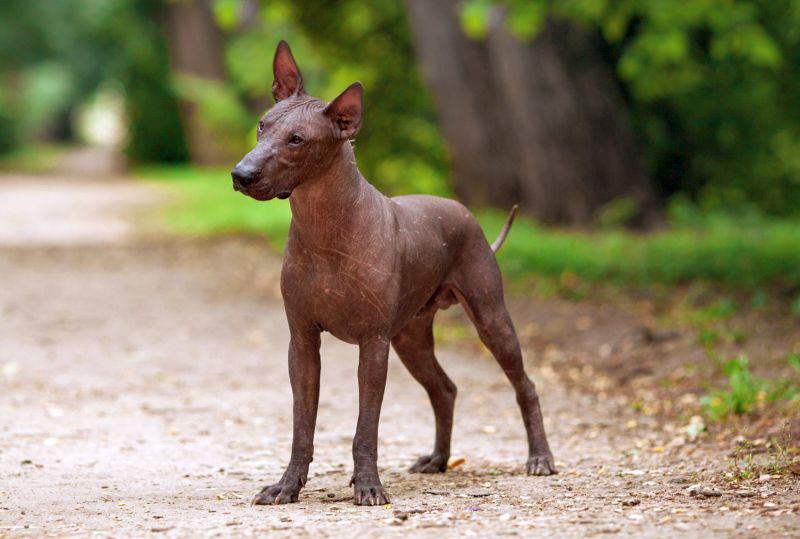
This dog hails from Mexico and has a history that goes back at least 3,000 years. Columbus and other explorers mentioned a “strange hairless dog” in their journals, which many historians believe to be the Xoloitzcuintli.
This breed comes in three different sizes: toy, miniature, and standard. As you can expect, a specific dog’s size depends on what line he comes from. The standard reaches up to 55 pounds, while the toy version only reaches to 15 pounds.
All types can come in hairless and haired varieties, but the hairless varieties are more common.
This dog hardly sheds at all. He does have a bit of hair, but not enough to make much of an impact. Because he is hairless, he needs some unique care.
Regular bathing is necessary (especially whenever he gets dirty), and sunscreen is also a must during prolonged sun exposure.
This breed is quite energetic and loves long walks. However, he is still typically well-behaved in a house as long as his exercise needs are met.
Overall, this dog is also quite easy to train. He can be an excellent watchdog but is not noisy unless he has something to say.
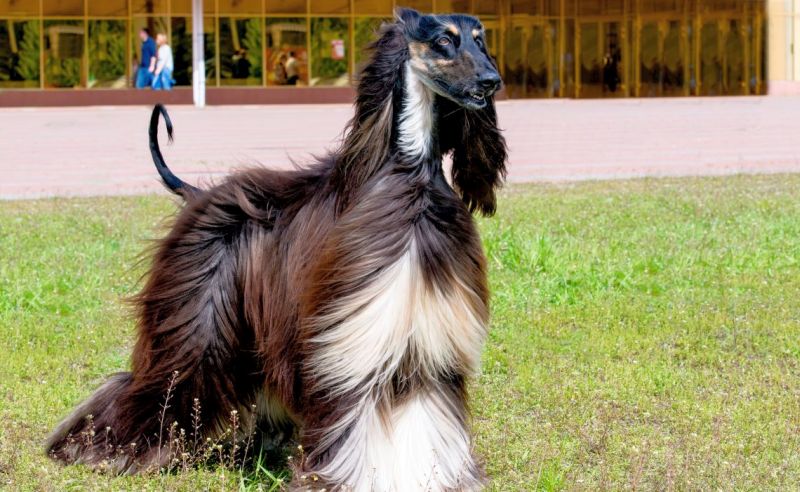
Are Low-Shedding Dogs Hypoallergenic?
When someone has a dog allergy, they are reacting to the dog’s dander and saliva – not the dog’s hair.
However, dog hair can spread their dander and saliva around the house and cause more reactions.
All dogs are going to produce allergens. There is no such thing as a saliva- and skin-free canine.
However, low-shedding dogs don’t have the excess hair that will spread the allergens around. Because of this, they are often considered “hypoallergenic.” This simply means they are less likely to cause an allergic reaction than other dogs, though the chance is still not zero.
***
There is a surprisingly large number of dog breeds out there that shed very little. While these canines are not technically “hypoallergenic,” they are better than other breeds that shed heavily, such as huskies and shepherds.
Are there any low-shedding breeds that we missed? Do you own a low-shedding breed? How much do they shed compared to other breeds?
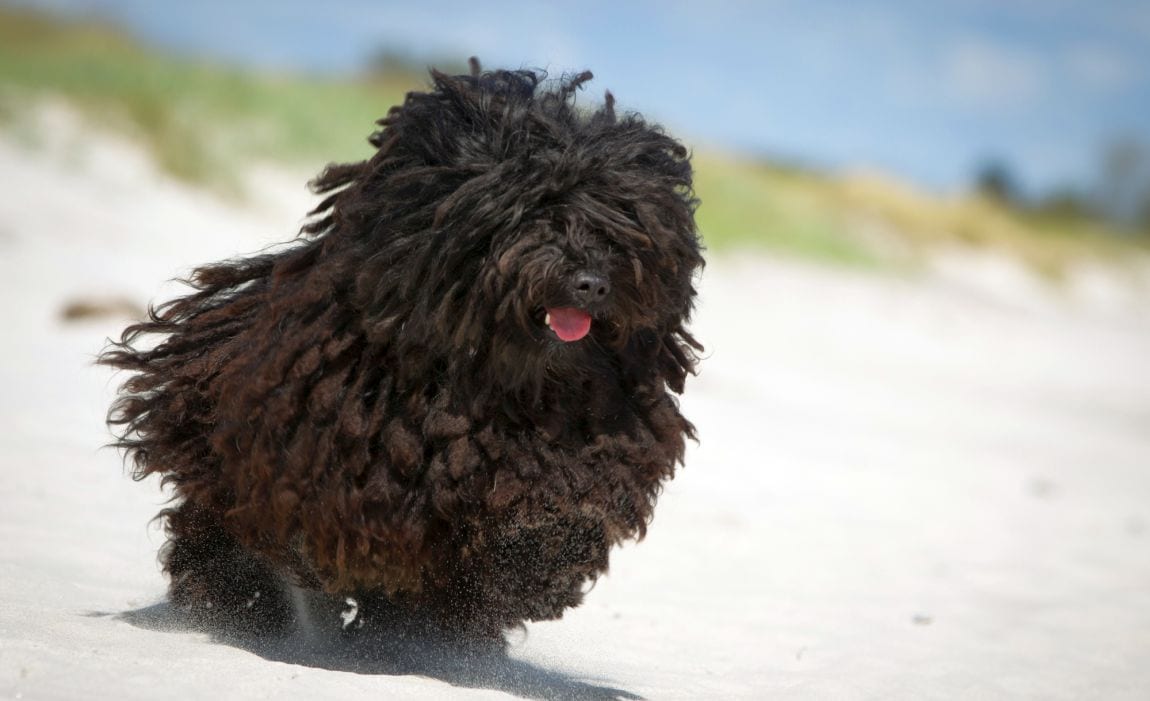

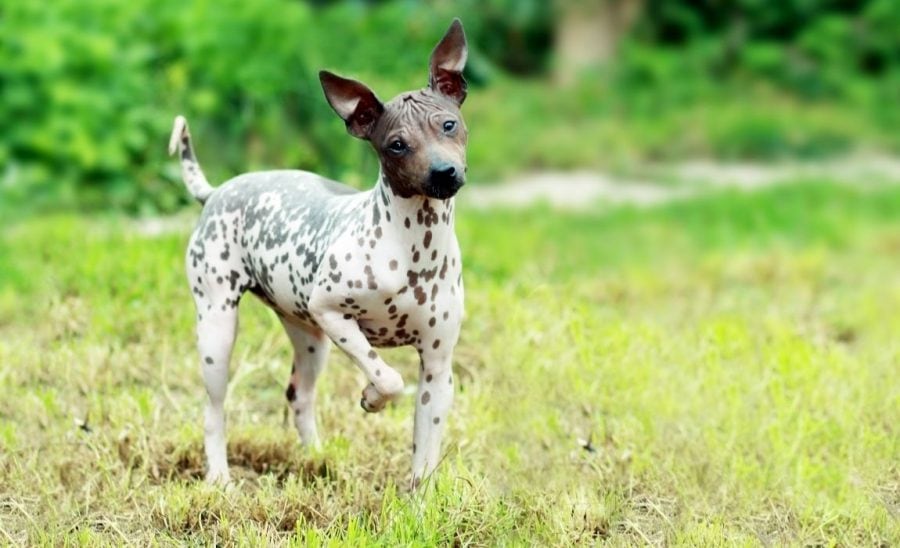


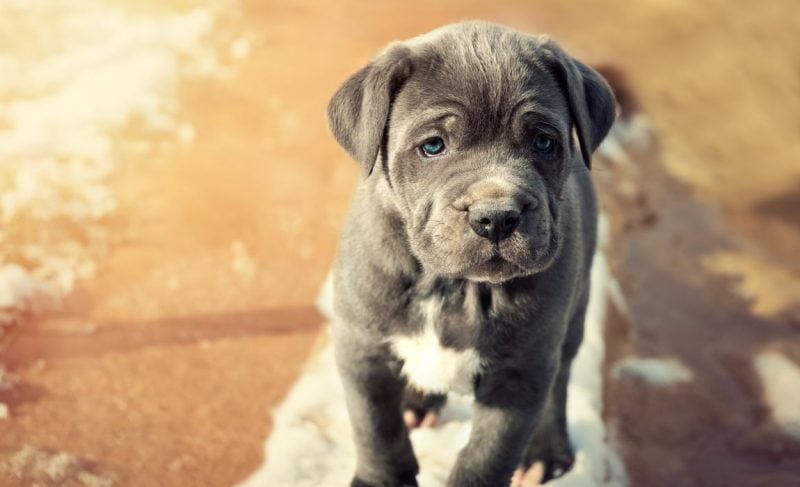
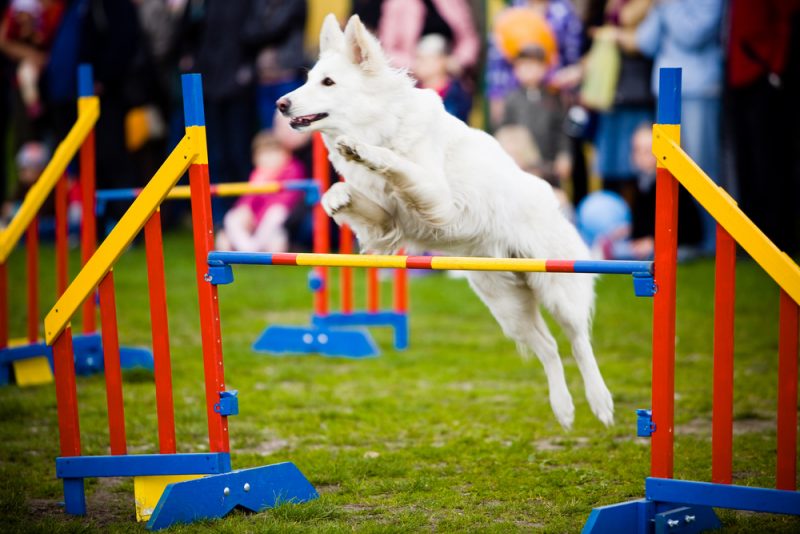
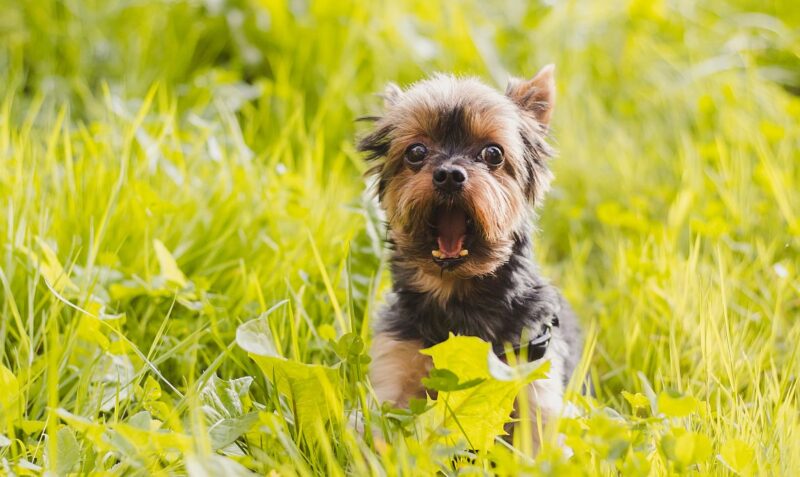
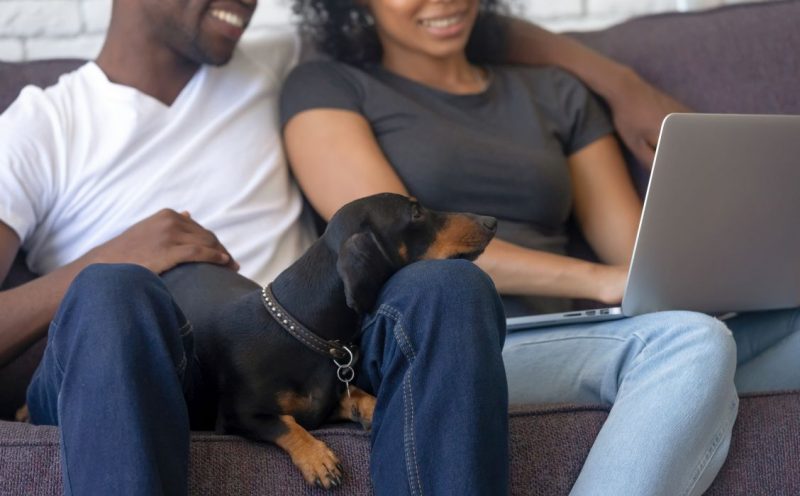
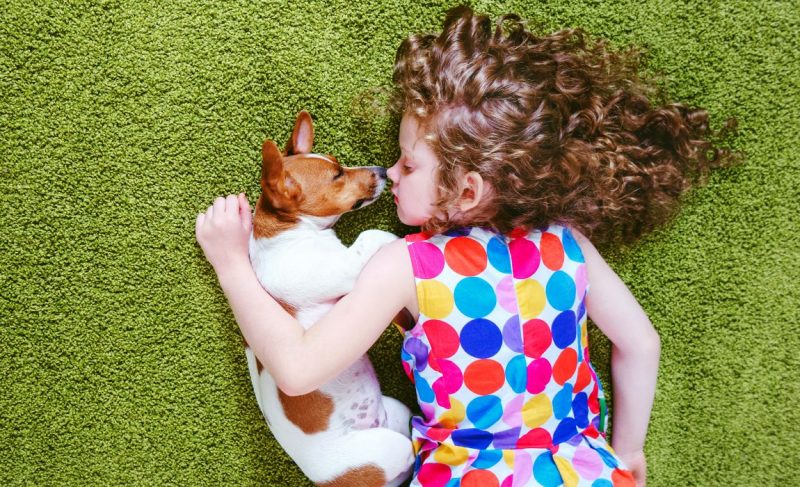
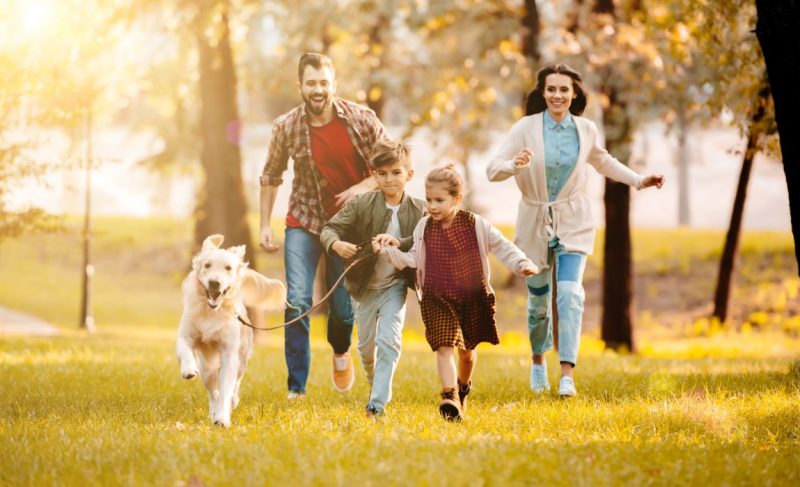
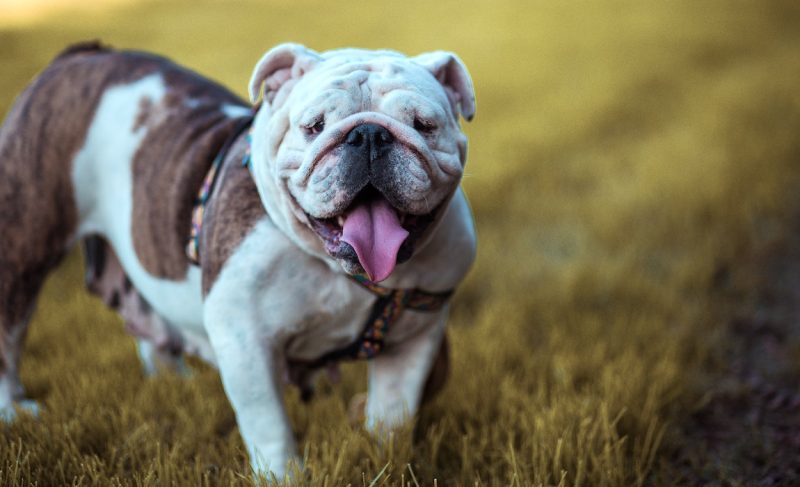

Leave a Comment